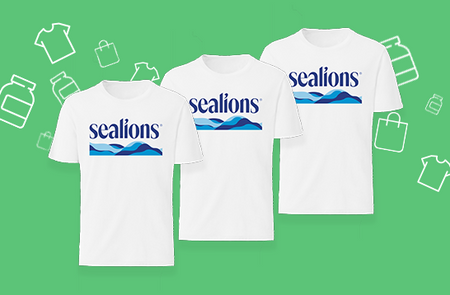
5 Tips for Keeping Your Dog Safe in Summer
Summer is here and you want to make the most of the hot weather while it lasts. But for your furry friends, the warmer days can be a little harder to navigate. So let’s take a look at five tips to help you keep your dog safe and cool during summer.
Keep your pet hydrated
Firstly, it’s important to make sure your dog has access to plenty of fresh, cold water. Dehydration can quickly become severe during these warmer months, and ensuring your pet can get themselves a refreshing drink when they need to is essential for keeping them safe. If you’re on the go, be sure to take a portable water bowl and a bottle of water. You can even make some tasty treats to keep them cool, such as ice cubes, made with a low-salt chicken stock, or frozen yoghurt pupsicles!
If you are concerned that your dog may be a little dehydrated, a quick test of their skin elasticity can help you to check – simply gently lift a small piece of skin on your dog’s back and see how quickly the skin returns back into place. If the skin slowly returns to normal, as opposed to snapping back within seconds, this could mean that your pet’s fluid levels are low. Other signs of dehydration to look out for include excessive panting, a dry nose and gums, as well as becoming more sluggish or lethargic.
Take extra care planning your walks
During the summer months, it can become far too hot to safely walk your dog. Walking your pet during the hottest times of the day can be particularly dangerous due to how hot the ground and air is – if you can’t comfortably hold your hand on tarmac for 5 seconds, then it’s definitely too hot for your dog’s paws.
Exercise is the most common trigger for heat related illnesses in dogs, so it’s always far safer to miss a walk when the temperatures are rising. To make sure your pet is still able to remain active, taking them out for their daily walk early in the morning or later in the evening can avoid soaring temperatures, and help to keep your pet safe. Ensure they always have a space to relax in the shade at home, or help them cool off by lying on a wet towel or cooling mat.
Be aware of summer allergies
Just like humans can suffer with hay fever, dogs can also struggle with allergens in the air. Signs that your dog may have summer allergies include itchy skin (which may cause excessive scratching), sore dry skin, which may become visibly red or irritated, nose rubbing, or constant paw licking. Should you notice their skin changing texture or appearance, you can soothe the irritation with a balm or oil. A daily supplement can also help to maintain your dog’s healthy skin, coat and nails.
Choose the best times to go out for a walk – pollen count is typically lower early in the morning, or in the evening, which is ideal when you’re also trying to walk your pet during these cooler times of the day. Avoiding walking through grassy areas can also be helpful, as grass pollen is often the main trigger of allergies in dogs.
Keep dogs well-groomed
Dogs don’t sweat the same way that humans do, and their coat can act as an insulator, helping to keep their temperature regulated. While some may shed lots more fur in the run up to summer, dogs don’t actually need their fur to be shaved to help them keep cool – it can in fact make them more susceptible to heatstroke or sunburn. Whether they need a summer cut or just some extra TLC for their coat, it’s important to make sure your pet is groomed in the best way for their breed.
Dogs have different layers of fur and skin which help to prevent them from getting sunburnt or overheating. Some dogs have a double coat and may require extra care brushing with a slicker brush, or a wide tooth comb, while dogs with a single coat can be safely brushed with a regular comb and a pin brush. If they don’t require a professional groom, you can keep your pet’s fur looking its best, while removing any fur they may have shed that is still stuck in their coat, with regular brushing at home.
Know the signs of heatstroke in dogs
Heatstroke can develop if your dog gets too hot, and can be an extremely dangerous condition. As we know, dogs don’t have the same ability to sweat that humans do – this is why you may notice them panting more, or seeking shade on a warmer day. However, if your dog is panting excessively this could be a warning sign of heatstroke.
Other indicators that your pet may be suffering with heatstroke include drooling, vomiting, diarrhoea, shaking and weakness. The majority of cases are caused by exercising or playing in high temperatures, so it’s important to make sure your dog has access to a cool shaded area where they can relax. However, heatstroke can develop if your pet is simply too warm. Avoid spaces which aren’t well ventilated, such as a conservatory or a car – even with a window cracked open, temperatures in enclosed spaces such as a car can become dangerously high very quickly.
With these 5 helpful tips, you can ensure you’re enjoying the summer with your dog, and making the most of those warmer months safely.
Tagged:









